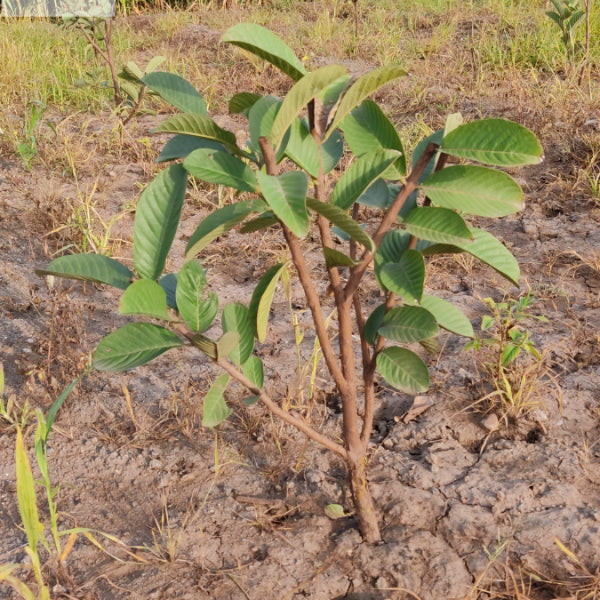Carbon Footprint of Home Appliances (Fridge, AC, Washing Machine)
Understanding the Carbon Footprint of Home Appliances: Fridge, AC, and Washing Machine In today's world, where climate change is a pressing concern, Read more
Connect with us
-
👥 Corporates
If you are looking for:
- 🌲 Tree Plantation Events
- 📊 CSR Projects
📧 corporate@growbilliontrees.com
📞 +91 9699723523
💬 +91 9325931304 WhatsApp (Only)
🕒 Mon - Sat | 10am - 7pm IST
-
🧩 Tree Plantation NGOs
If you are looking for:
- 💰 Financial Assistance
- 🤝 Operational Support
📧 support@growbilliontrees.com
📞 +91 9699723523
💬 +91 9325931304 WhatsApp (Only)
🕒 Mon - Sat | 10am - 7pm IST
-
🌼 Individuals
If you are looking for:
- 👥 Group Tree Plantation Drive
- 🌳 Bulk Tree Plantation
📞 +91 9699723523
💬 +91 9325931304 WhatsApp (Only)
🕒 Mon - Sat | 10am - 7pm IST
Trending
Trees for Corporates
Understanding the Carbon Footprint of Home Appliances: Fridge, AC, and Washing Machine
In today's world, where climate change is a pressing concern, understanding the carbon footprint of our daily appliances is crucial. Home appliances like refrigerators, air conditioners, and washing machines play a significant role in our energy consumption and, consequently, our carbon emissions. By being aware of their impact, we can make informed choices that contribute to a healthier planet.
What is Grow Billion Trees Team?
The Grow Billion Trees Team is an initiative dedicated to combating climate change through reforestation. By planting trees, we not only absorb carbon dioxide but also restore ecosystems, enhance biodiversity, and improve air quality. This team is a beacon of hope, rallying communities and individuals to take action against environmental degradation.
Why Grow Billion Trees Team Matters for the Planet
Every tree planted is a step towards a sustainable future. The Grow Billion Trees Team inspires individuals to take responsibility for their carbon footprint. By engaging in tree planting, we can collectively make a significant impact on our environment. Trees are vital for absorbing CO₂, providing oxygen, and supporting wildlife. Together, we can create a greener, healthier planet for future generations.
Factors Contributing to Carbon Footprint
- Energy Consumption: The amount of electricity used by appliances directly correlates with their carbon emissions.
- Type of Energy Source: Fossil fuels emit more CO₂ compared to renewable energy sources.
- Appliance Efficiency: Energy-efficient models consume less power, reducing overall emissions.
- Usage Patterns: How often and how long appliances are used can significantly affect their carbon footprint.
- Maintenance: Regular maintenance ensures appliances run efficiently, minimizing energy waste.
Example Calculation
To understand how carbon footprints are measured, let’s consider a simple example:
If a refrigerator consumes 400 kWh per year and the emission factor for electricity in your area is 0.5 kg CO₂ per kWh, the carbon footprint can be calculated as follows:
Carbon Footprint = Energy Consumption × Emission Factor
So, 400 kWh × 0.5 kg CO₂/kWh = 200 kg CO₂ per year for the refrigerator.
For comparison, a flight from Delhi to Mumbai emits approximately 115 kg CO₂, which is equivalent to running a fridge for about 10 months!
Tips to Reduce Carbon Footprint
- Choose Energy-Efficient Appliances: Look for ENERGY STAR ratings or similar certifications.
- Optimize Usage: Use appliances during off-peak hours to reduce energy costs and emissions.
- Regular Maintenance: Keep appliances clean and well-maintained to ensure they operate efficiently.
- Unplug When Not in Use: Disconnect appliances that are not in use to prevent phantom energy consumption.
- Consider Renewable Energy: If possible, switch to renewable energy sources like solar or wind power.
FAQs
1. What is the carbon footprint of a refrigerator?
The carbon footprint of a refrigerator varies based on its energy consumption and the source of electricity. On average, a standard refrigerator can emit around 200-300 kg of CO₂ per year.
2. How can I make my air conditioner more efficient?
To improve the efficiency of your air conditioner, ensure regular maintenance, use programmable thermostats, and keep doors and windows closed while it's running.
3. Do washing machines have a significant carbon footprint?
Yes, washing machines contribute to carbon emissions primarily through the energy they consume. Using cold water settings and full loads can help reduce their impact.
4. How does tree planting help offset my carbon footprint?
Tree planting helps absorb CO₂ from the atmosphere, effectively offsetting the emissions produced by your appliances and other activities. One mature tree can absorb about 22 kg of CO₂ per year.
Conclusion
Understanding the carbon footprint of home appliances is essential for making environmentally conscious choices. By taking steps to reduce our energy consumption and supporting initiatives like the Grow Billion Trees Team, we can collectively work towards a sustainable future. Plant trees with GrowBillionTrees to offset your footprint.
You may like
Energy Efficiency
When it comes to home appliances, energy efficiency is the superhero we never knew we needed. Imagine your fridge, AC, and washing machine donning capes, saving the planet one kilowatt at a time! Energy-efficient appliances not only reduce your carbon footprint but also keep your electricity bills from soaring higher than your laundry pile. Look for the Energy Star label, and you’ll be on your way to a greener home. Plus, who doesn’t want to brag about their eco-friendly gadgets at the next dinner party?
Sustainable Materials
Ever thought about what your appliances are made of? Sustainable materials are the unsung heroes in the battle against climate change. When you choose appliances crafted from recycled or eco-friendly materials, you’re not just making a purchase; you’re making a statement! It’s like giving Mother Earth a high-five every time you load your washing machine. So, next time you’re appliance shopping, channel your inner eco-warrior and opt for those made with sustainability in mind. Your home—and the planet—will thank you!
Lifecycle Assessment
Lifecycle assessment sounds fancy, but it’s just a way to measure the environmental impact of your appliances from cradle to grave. Think of it as a report card for your fridge, AC, and washing machine. By understanding their lifecycle, you can make smarter choices that minimize your carbon footprint. It’s like knowing the backstory of your appliances—where they’ve been, what they’ve done, and how they can do better. So, before you hit that “buy” button, consider the entire journey of your appliance. It’s not just about looks; it’s about legacy!
Smart Technology
Welcome to the future, where your appliances can talk to you—well, sort of! Smart technology in home appliances is like having a personal assistant who’s also a tree-hugger. These gadgets can optimize energy use, learn your habits, and even remind you when it’s time to do laundry. By embracing smart tech, you’re not just making life easier; you’re also slashing your carbon footprint. So, why not let your fridge do the thinking while you kick back and enjoy a cold drink? It’s a win-win for you and the planet!
Recycling and Disposal
Let’s face it, appliances don’t last forever. When it’s time to say goodbye to your old fridge or washing machine, recycling and proper disposal are key. Think of it as giving your appliances a second chance at life! Many components can be recycled, reducing waste and minimizing your carbon footprint. So, don’t just toss them in the landfill like yesterday’s leftovers. Check for local recycling programs or take them to a facility that knows how to handle them with care. Your appliances deserve a dignified farewell!
Carbon Offset Programs
If you’re feeling guilty about your carbon footprint, carbon offset programs are like a guilt-free dessert after a heavy meal. These programs allow you to invest in projects that reduce greenhouse gas emissions, effectively balancing out the impact of your home appliances. It’s like planting a tree for every load of laundry you do! By participating in these programs, you can feel good about your appliance choices while contributing to a greener planet. So, go ahead and indulge in that new AC unit—just make sure to offset it with a little eco-love!
Corporate Plantations
FAQ
What is the carbon footprint of home appliances like fridges, ACs, and washing machines?
The carbon footprint of home appliances varies based on energy consumption and usage patterns. For instance, a fridge can emit around 100-200 kg of CO2 annually, while an AC might contribute 300-600 kg, depending on efficiency. Washing machines, on the other hand, can add another 100-150 kg. By choosing energy-efficient models, you can significantly reduce these numbers and help the planet breathe a little easier.
How can I reduce the carbon footprint of my fridge?
To reduce your fridge's carbon footprint, opt for an energy-efficient model with a high star rating. Keep it well-maintained by cleaning the coils and ensuring the door seals are tight. Set the temperature to a moderate level, and avoid overloading it. Also, consider using it wisely—don’t leave the door open longer than necessary. Every little bit helps, and your fridge can be a friend to the environment!
What’s the best way to minimize the carbon footprint of my air conditioner?
Minimizing your AC's carbon footprint starts with choosing an energy-efficient model. Regular maintenance, like cleaning filters and ensuring proper insulation, can enhance efficiency. Set the thermostat a few degrees higher and use fans to circulate air. Also, consider using it only when necessary—embrace the natural breeze! Your AC can chill your home without heating up the planet.
How does the washing machine contribute to my home's carbon footprint?
Washing machines contribute to your carbon footprint primarily through electricity usage and water heating. An average machine can emit around 100-150 kg of CO2 annually. To reduce this, wash full loads, use cold water settings, and choose energy-efficient models. Remember, every wash counts, so make it eco-friendly and keep your laundry guilt-free!
Are there eco-friendly alternatives to traditional home appliances?
Absolutely! Eco-friendly alternatives include energy-efficient models that consume less power and water. Look for appliances with high energy star ratings or consider using solar-powered options. Additionally, you can explore second-hand appliances or even energy-sharing programs. Going green doesn’t mean sacrificing comfort; it’s about making smarter choices!
How can I calculate the carbon footprint of my home appliances?
Calculating the carbon footprint of your home appliances involves checking their energy consumption in kilowatt-hours (kWh) and multiplying it by the carbon intensity of your electricity source. You can find online calculators that simplify this process. By understanding your appliances' impact, you can make informed decisions to reduce your overall footprint. Knowledge is power, and in this case, it’s also eco-friendly!
What role does energy efficiency play in reducing carbon footprints?
Energy efficiency is crucial in reducing carbon footprints as it directly lowers energy consumption. Efficient appliances use less electricity, which means fewer fossil fuels burned for power generation. This translates to lower CO2 emissions. By investing in energy-efficient home appliances, you not only save on bills but also contribute to a healthier planet. It’s a win-win!
Why should I care about the carbon footprint of my home appliances?
Caring about the carbon footprint of your home appliances is essential for a sustainable future. Every appliance contributes to greenhouse gas emissions, impacting climate change. By being mindful of your choices, you can reduce your environmental impact, save money on energy bills, and inspire others to do the same. Plus, it feels good to be a planet-saving hero!























